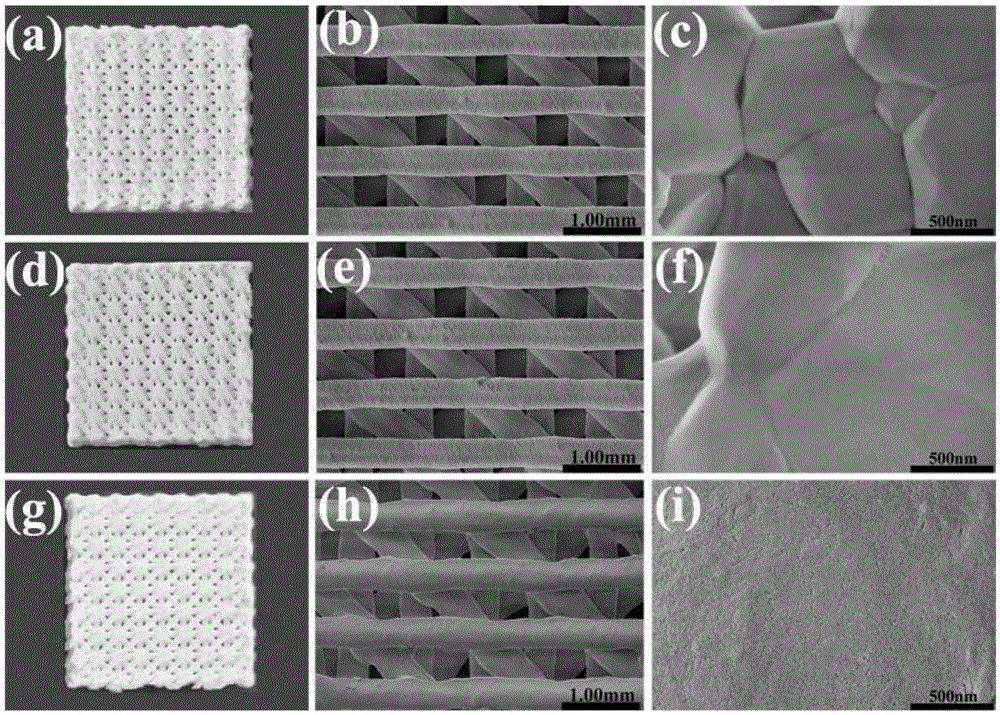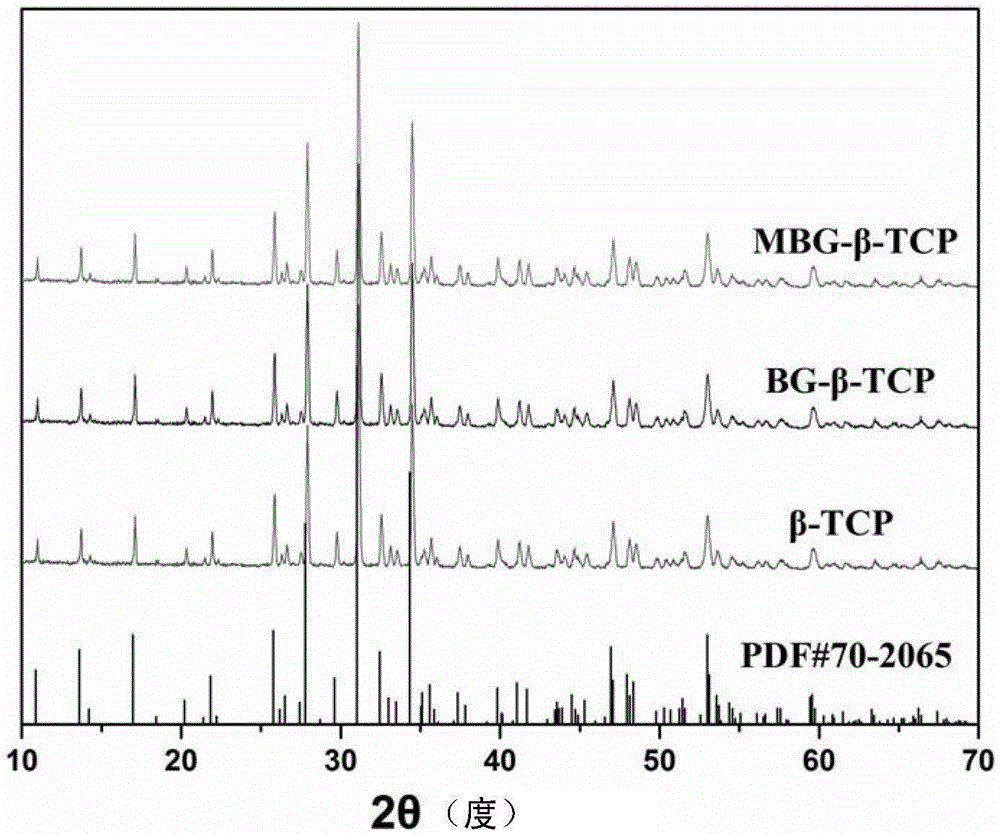3D (three-dimensional) printing mesoporous bioactivity glass modified biological ceramic support, and preparation method and application thereof
A technology of bioactive glass and bioceramics, which is applied in medical science, prosthesis, additive processing, etc., can solve the problems of lack of micro-nano structure, lack of multi-functionality, and unsatisfactory interfacial activity, and achieve good mechanical properties and process simple and easy effects
- Summary
- Abstract
- Description
- Claims
- Application Information
AI Technical Summary
Problems solved by technology
Method used
Image
Examples
Embodiment 1
[0066] (1) Mix 6g P123 with 90g ethanol, dissolve and stir for 1 hour, add 2.1g 10.05g ethyl orthosilicate, calcium nitrate tetrahydrate, 1.10g triethyl phosphate, 1.5g hydrochloric acid and stir for 24 hours to obtain mesoporous biological activity glass precursor;
[0067] (2) 4.5g of pure β-tricalcium phosphate powder, after fully mixing with 3g of PVA, use three-dimensional printing technology to prepare scaffold materials;
[0068] (3) Calcining the printed scaffold at 1100°C for 3 hours to obtain a pure β-tricalcium phosphate ceramic scaffold;
[0069] (4) The mesoporous bioactive glass precursor was spin-coated on the surface of the pure β-TCP scaffold for 3 times, and sintered at 650°C for 5 hours to obtain the mesoporous bioactive glass-on-β-TCP ceramic scaffold.
[0070] Mechanical properties, osteogenic activity and angiogenic activity were then evaluated as described above. For the structural and performance characterization of the mesoporous bioactive glass modi...
Embodiment 2
[0072] (1) Mix 6g P123 with 100g ethanol, dissolve and stir for 1 hour, add 10.05g ethyl orthosilicate, 2.1g calcium nitrate tetrahydrate, 1.10g triethyl phosphate, 1.5g hydrochloric acid and stir for 24 hours to obtain mesoporous biological activity glass precursor;
[0073] (2) 4.5g of pure β-tricalcium phosphate powder, after fully mixing with 2g of PVA, use three-dimensional printing technology to prepare scaffold materials;
[0074] (3) Calcining the printed scaffold at 1150°C for 3 hours to obtain a pure β-tricalcium phosphate ceramic scaffold;
[0075] (4) The mesoporous bioactive glass precursor was spin-coated on the surface of the pure β-TCP scaffold for 6 times, and sintered at 600°C for 6 hours to obtain the mesoporous bioactive glass-modified β-TCP ceramic scaffold.
[0076] Mechanical properties, osteogenic activity and angiogenic activity were then evaluated as described above. The results also confirmed that the modification of the mesoporous bioactive glass ...
PUM
| Property | Measurement | Unit |
|---|---|---|
| pore size | aaaaa | aaaaa |
| pore size | aaaaa | aaaaa |
Abstract
Description
Claims
Application Information
 Login to View More
Login to View More - R&D
- Intellectual Property
- Life Sciences
- Materials
- Tech Scout
- Unparalleled Data Quality
- Higher Quality Content
- 60% Fewer Hallucinations
Browse by: Latest US Patents, China's latest patents, Technical Efficacy Thesaurus, Application Domain, Technology Topic, Popular Technical Reports.
© 2025 PatSnap. All rights reserved.Legal|Privacy policy|Modern Slavery Act Transparency Statement|Sitemap|About US| Contact US: help@patsnap.com



